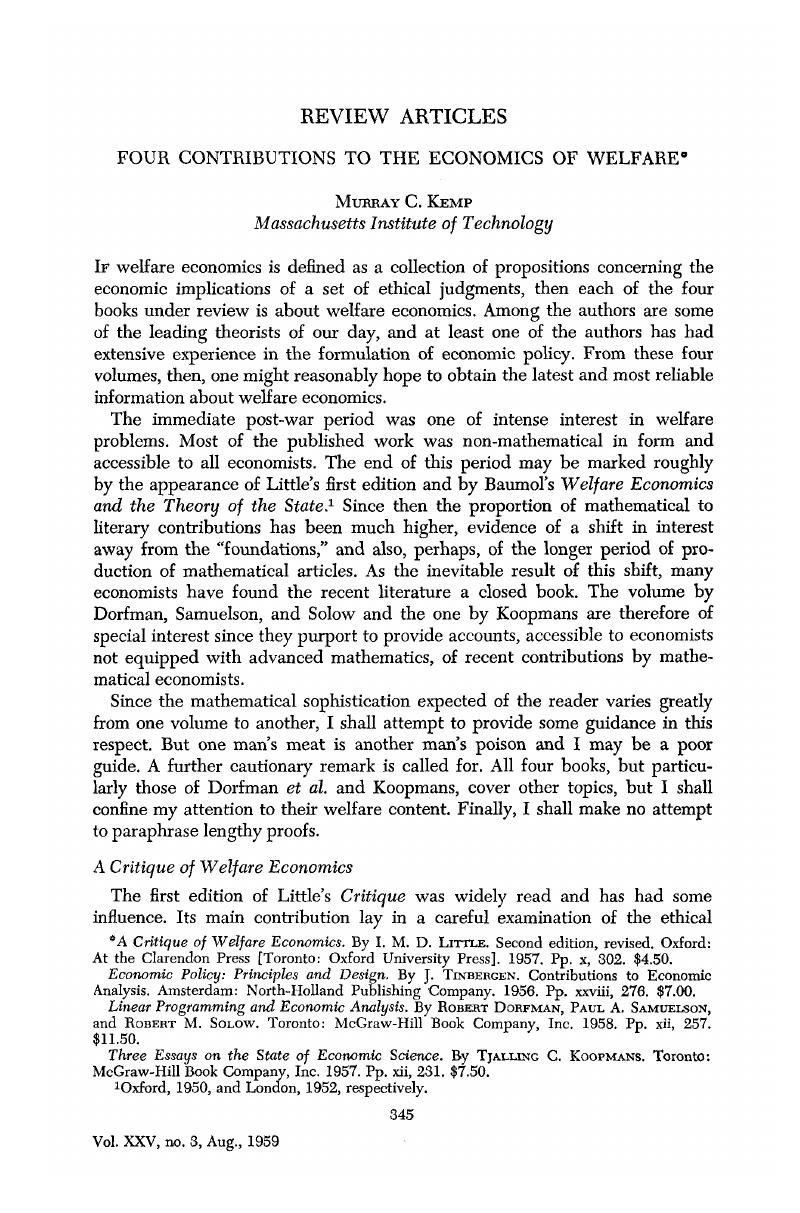Article contents
Four Contributions to the Economics of Welfare
Published online by Cambridge University Press: 07 November 2014
Abstract

- Type
- Review Articles
- Information
- Canadian Journal of Economics and Political Science/Revue canadienne de economiques et science politique , Volume 25 , Issue 3 , August 1959 , pp. 345 - 351
- Copyright
- Copyright © Canadian Political Science Association 1959
References
1 Qxford, 1950, and London, 1952, respectively.
2 In his 1950 ed., chap. vi.
3 Kennedy, C., “The Economic Welfare Function and Dr. Little's Criterion,” Review of Economic Studies, XX, 1952–1953, 137–42CrossRefGoogle Scholar; Kemp, Murray C., “Welfare Economics: A Stocktaking,” Economic Record, XXX, 1954, 245–52Google Scholar; Little, 1957 ed., v-vi, 106. The remainder of this section draws heavily on my article in the Economic Record.
4 On the Theory of Economic Policy (Amsterdam, 1952)Google Scholar and Centralization and Decentralization in Economic Policy (Amsterdam, 1954).Google Scholar
5 Note that instrumental variables may also be welfare variables.
6 They do formulate a few footnote proofs in matrix notation. For readers of footnotes there is an appendix on matrices which, however, is not the best part of the book.
7 0ne other pedagogical comment: the reader is introduced at an early stage to the notion of a dual and is peppered with many worked examples. But it is not until page 174 that the authors provide him with a clear account of the relation between a linear programming problem and its dual.
8 Dorfman et al. also tidy up the proofs of several well-known propositions in “timeless” welfare economics. In the older proof that the competitive outcome is Pareto optimal, for example, it is taken for granted that resources could not be better allocated to unprofitable products. In their demonstration the assumption becomes a theorem.
9 Normalized on one of the components of the vector.
- 1
- Cited by




